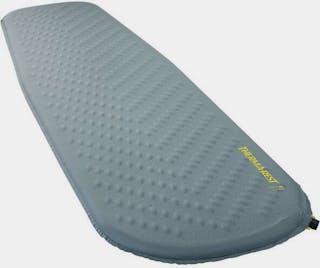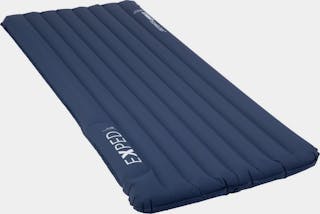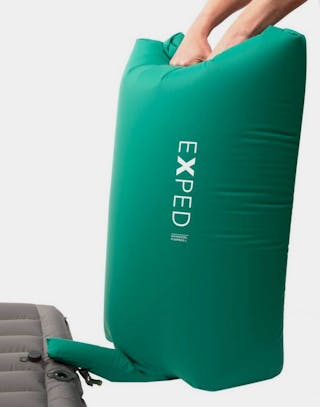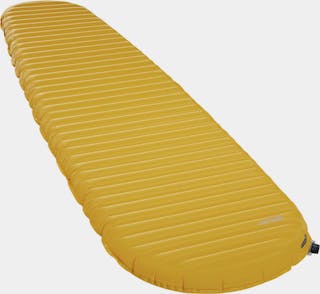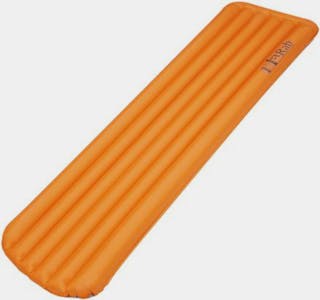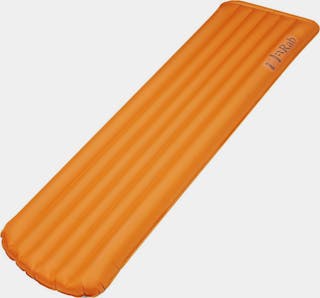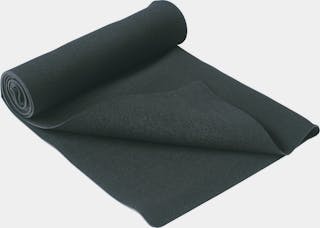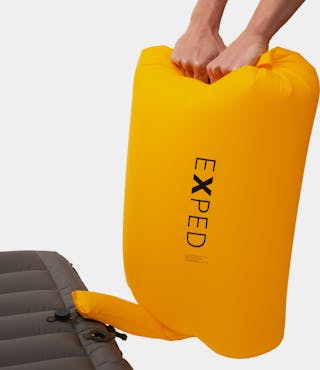Sleeping Pads for Camping – Comfort and Warmth While You Sleep
Self-inflating, Foam, and Air Pads
Why does your sleeping pad matter?
The sleeping pad plays a major role in camping comfort. Its most important function is to keep you warm: the insulation of a sleeping bag compresses under your body weight and becomes a thin layer, so additional insulation underneath is essential. That’s why sleeping pads are made for different seasons, just like sleeping bags. There are three main types of sleeping pads: air pads, foam pads, and self-inflating pads.
Air pads – the royalty of sleeping pads
Inflatable air pads have become extremely popular in recent years. They are typically 5–9 cm thick, making them the most comfortable option year-round. There are several types of insulation used: baffles, down, and synthetic fiber. Baffles alone are the lightest option. Inside the air chambers, a lightweight structure prevents air movement. A great choice from spring through fall – and some models even work in winter! In down- and synthetic-insulated pads, the insulation inside the air chambers traps warm air in place, creating the same kind of warm air layer underneath you that your sleeping bag creates above you.
When using an air pad, it’s important to prepare your sleeping area carefully: since air pads can puncture, avoid sharp objects like glass shards or jagged rocks. The tent or shelter floor protects the pad surface, and using a tent footprint adds extra safety. For added luxury, you can bring an air pad for sleeping and a shared foam pad with your group for use as a campfire seat that can be tossed down anywhere without worry.
A basic air mattress works well in summer but can be uncomfortably cold by late fall. However, these summer pads pack down incredibly small and are lighter than the rubber air mattresses of the past. Air pads with insulation are warm enough even for sleeping on snow. Some air pads have built-in pumps, while others require a separate pump. We always recommend using a pump, as inflating by mouth introduces a surprising amount of moisture into the pad, which is hard to remove. Using a pump also dramatically reduces the chance of getting lightheaded at camp.
Self-inflating pads
Self-inflating pads are usually 2.5–4 cm thick and work with an internal foam structure. When you reach camp, take the pad out of its stuff sack, open the valve, and lay it flat. The foam inside slowly returns to its original shape, pulling air inside. After 2–20 minutes, depending on the pad and conditions, you can either close the valve or blow in a few breaths to top it off, then close the valve. The higher the quality of the pad and the warmer the air, the faster it will self-inflate. Pads that have been tightly packed for a long time take longer to return to full shape. Thermarest is the most trusted and popular brand in our selection for self-inflating pads. Always store your self-inflating pad with the valve open. Only pack it tightly into its stuff sack when traveling. This helps keep the foam lofted and effective.
Foam pads
Foam pads are extremely durable and affordable. They don’t puncture, and even deep scratches don’t reduce their insulation. They’re simple and budget-friendly, but they do take up quite a bit of space when rolled. Most backpacks have external straps specifically for foam pads. Foam pads are typically rolled, but we also carry a few folding models. Some foam pads have textured surfaces with waves or dimples to enhance insulation more effectively than their weight alone might suggest. Foam pads are the most basic type and offer the least cushioning – on cabin floors or very hard ground, some campers may find them uncomfortably firm.
How to choose the right sleeping pad for your use
- Consider how warm the pad needs to be: For summer use, very little insulation is needed; in spring and autumn it’s good to have a pad with an R-value of at least 2–3, and for winter use an R-value of 6 or higher is by no means excessive.
- Does the pad need to pack small or be extra lightweight, or is a slightly larger option fine? Our product range includes everything from ultralight pads to more substantial ones - choose a compact and lightweight sleeping pad if space is limited or if you want to minimize weight for, for example, racing or long treks, or opt for a heavier and more comfortable pad if you can carry it and sleeping comfort is your top priority.
- Self-inflating, inflatable, or foam? Self-inflating pads combine ease of use with comfort, inflatable pads are the most comfortable, and foam pads are the most durable.
- Pay attention to the fabrics: The denier rating of the pad’s surface fabric gives an indication of its durability. If you expect heavy use or rough conditions, it’s worth choosing a slightly thicker fabric. If you’re focused on minimizing weight, a low-denier fabric is the better choice.
- Don’t forget a quality pump to go with an inflatable pad: Inflatable pads shouldn’t be inflated by mouth, as breath contains a lot of moisture.
Scandinavian Outdoor Selection
We’ve carefully chosen our sleeping pads – trusted premium brands like
Thermarest,
Exped,
Rab, and
Sea to Summit
have proven their reliability over years and decades. Robens is a newer addition, and Outwell is a great choice for campsite use.
Order yours from a Finnish specialty store – fast delivery, even to your doorstep!































